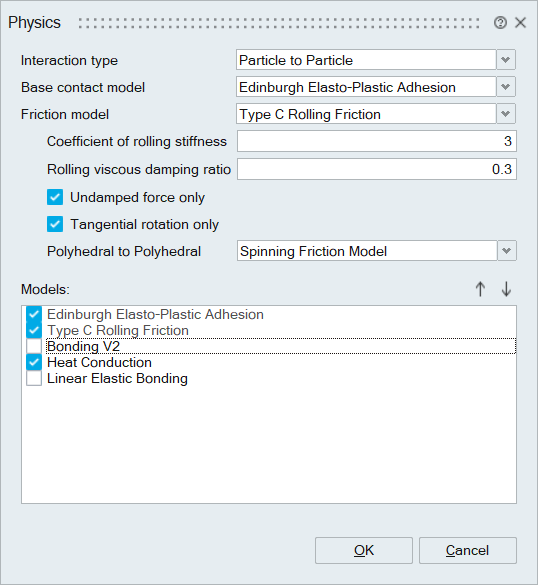Physics Model
![]()
The Physics Model defines how particles behave, collide, and interact with other particles and geometries in your simulation. Choosing the right model and configuring material properties correctly is important for realistic, stable, and accurate results.
This tool used to select valid models based on the particles and material parameters used in the current simulation.

Interaction Type: User can select the contact models for following
interactions.
- Particle to Particle
- Particle to Geometry
- Particle Body Force refers to external forces that act uniformly on the entire particle’s body, influencing its motion and behaviour in the simulation.
Base Contact Model:
The Base Contact Model calculates how particles and geometries interact when they come into contact. Following base models supported.
- Hertz-Mindlin
- Hertz-Mindlin with JKR
- Edinburgh Elasto-Plastic Adhesiony
- No Base Model
Friction Model:
The Friction model determines how particle resist sliding and rolling during contact with other particles and geometry. Following friction models supported.
- Standard Rolling Friction.
- Type C Rolling Friction.
Additional Model:
Additional Models extend the core physics capabilities by allowing users to simulate complex particle
behaviours or coupled physical processes beyond basic contact interactions. Following additional models
supported in SimLab.
- Bonding V2 (P-P)
- Heat Conduction (both P-P and P-G)
- Linear Elastic Bonding (both P-P and P-G)
- Relative Wear (P-G)